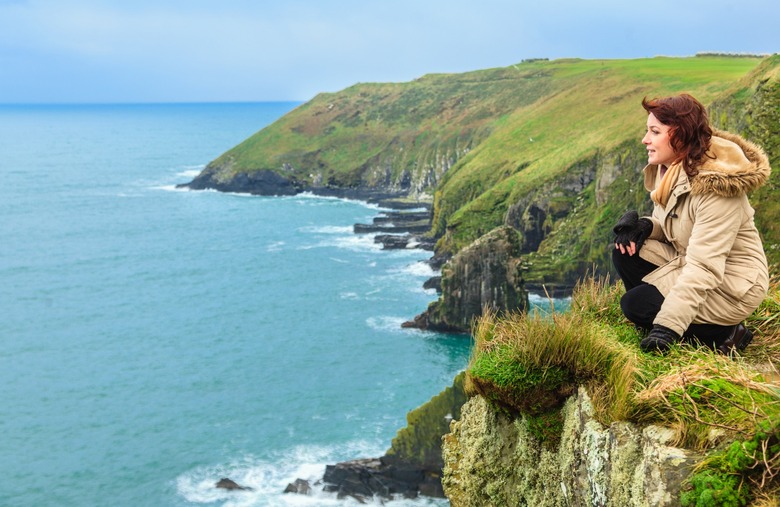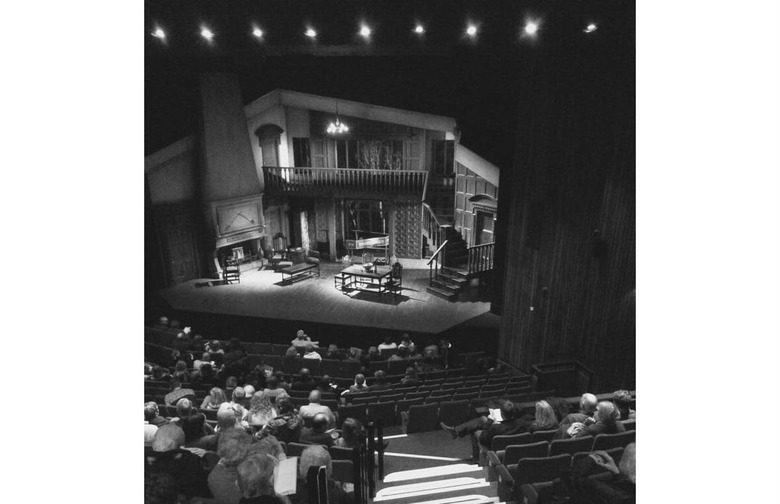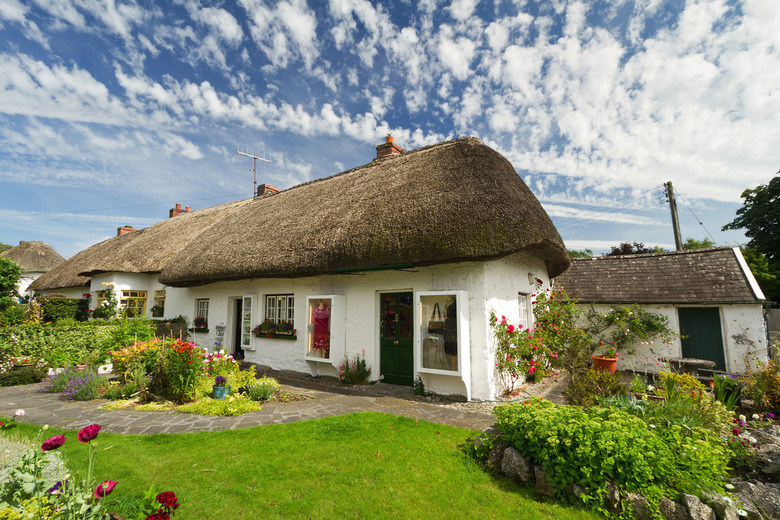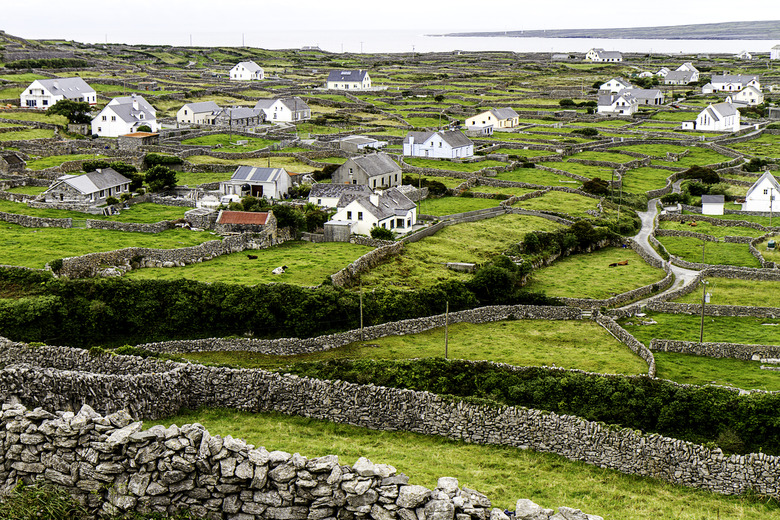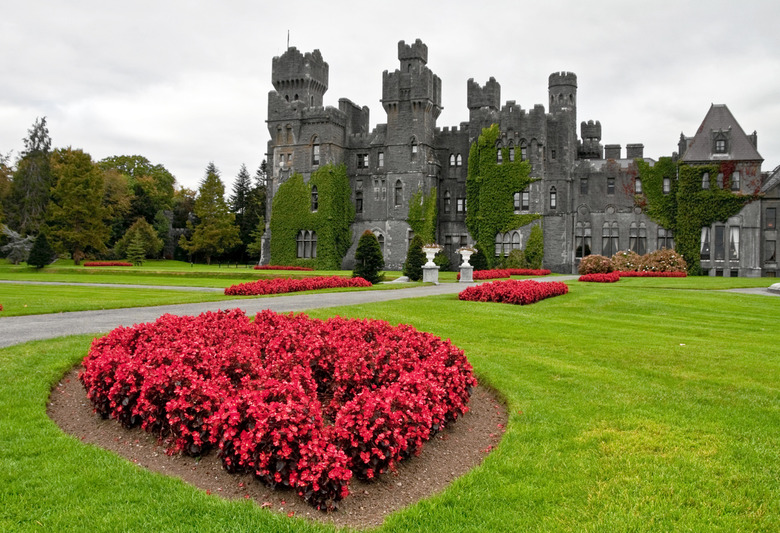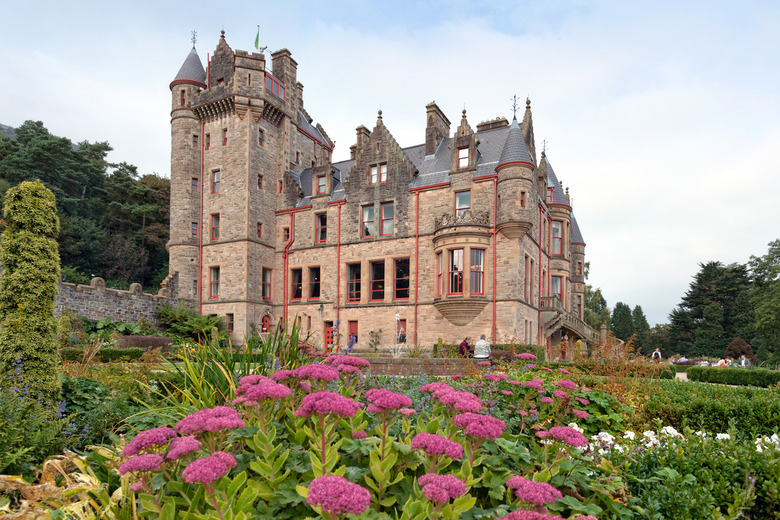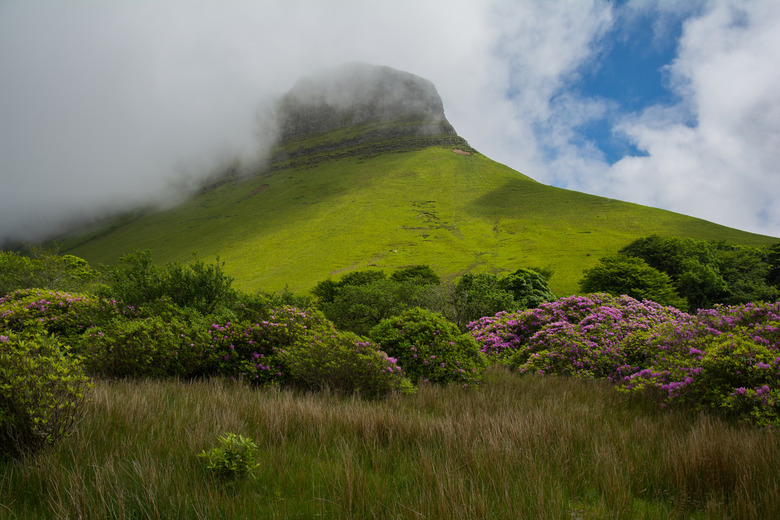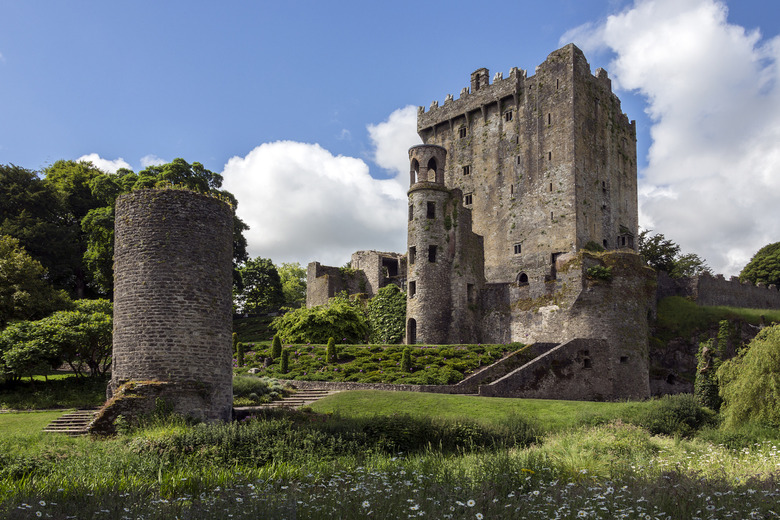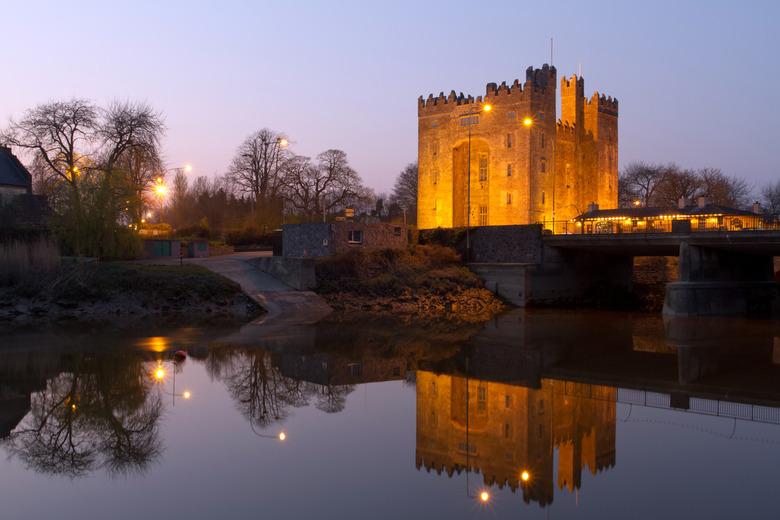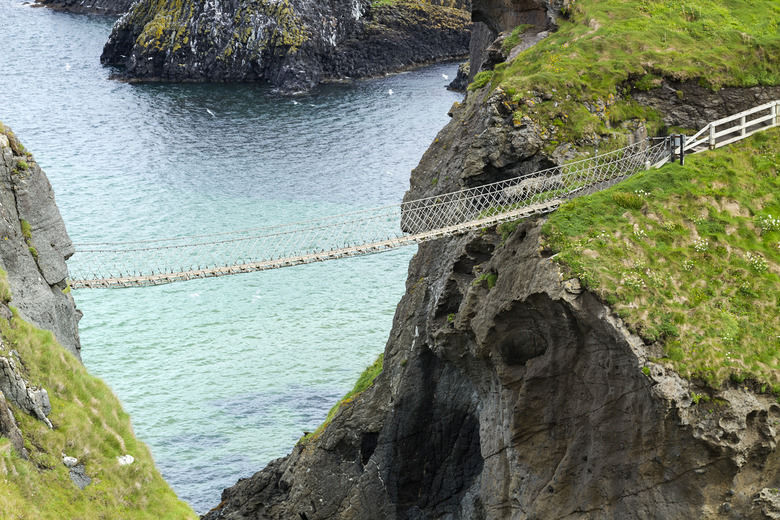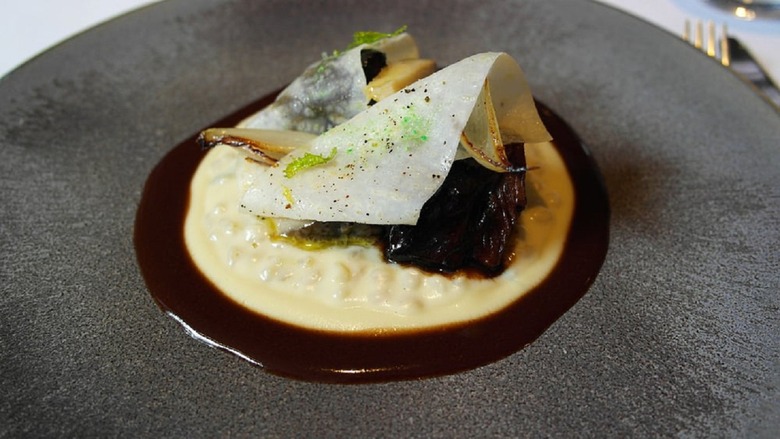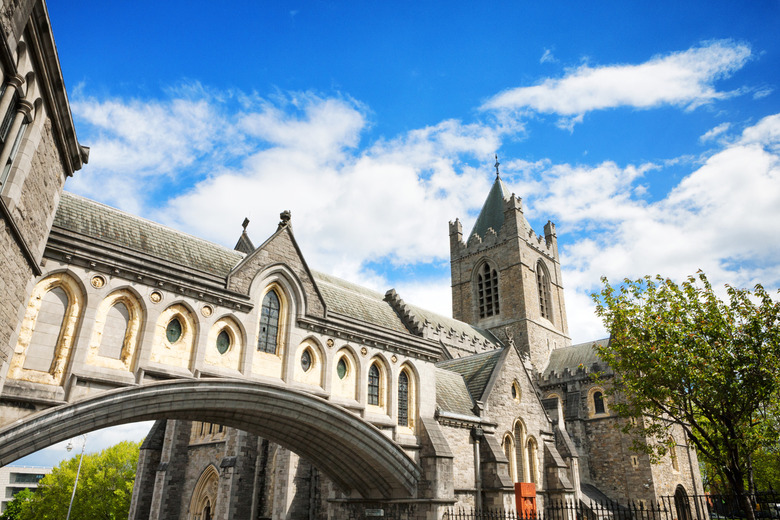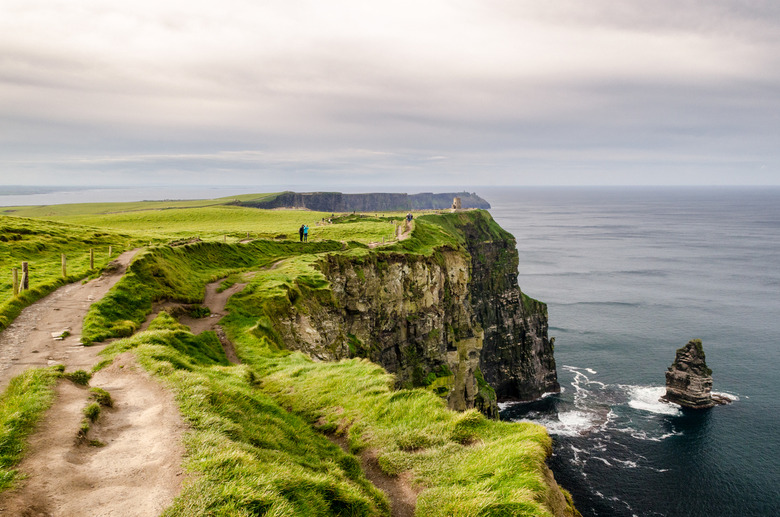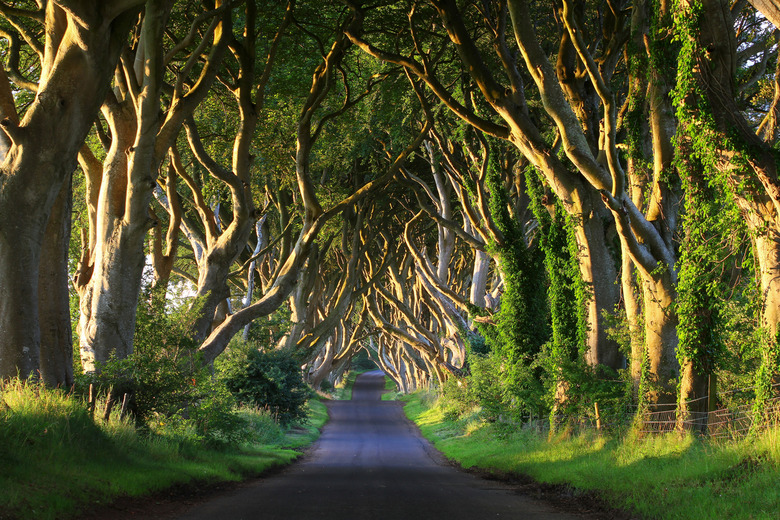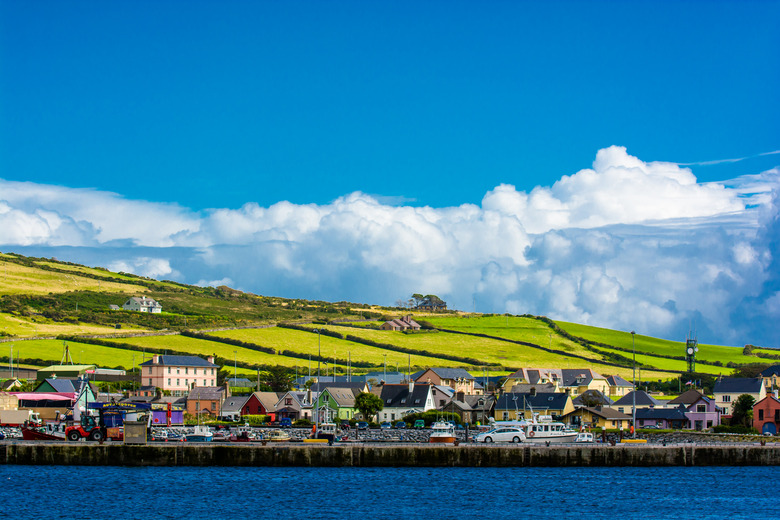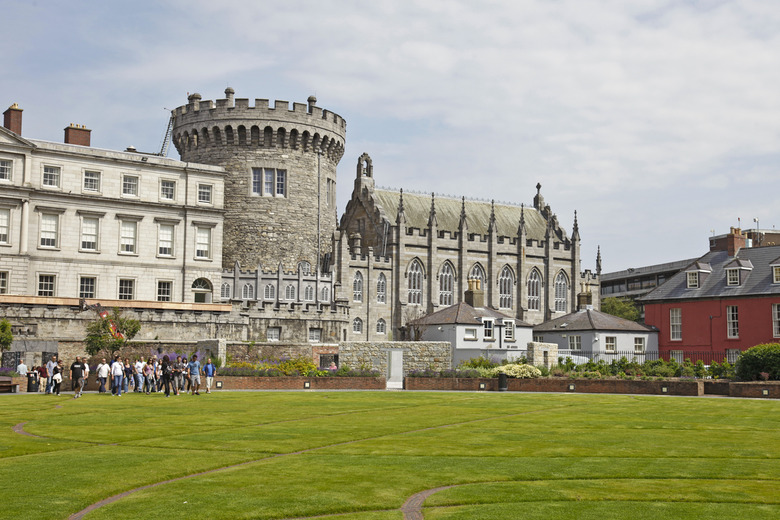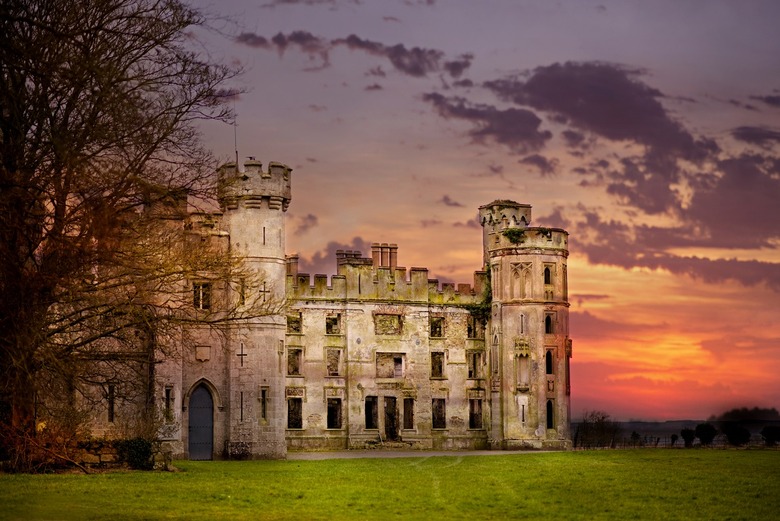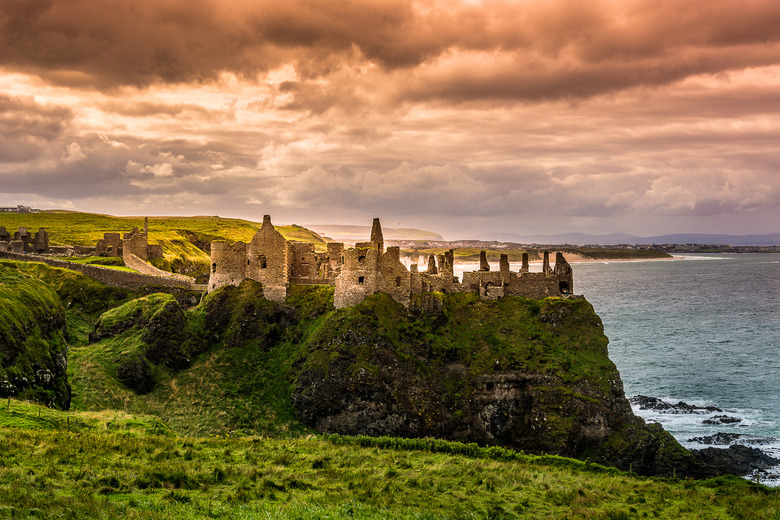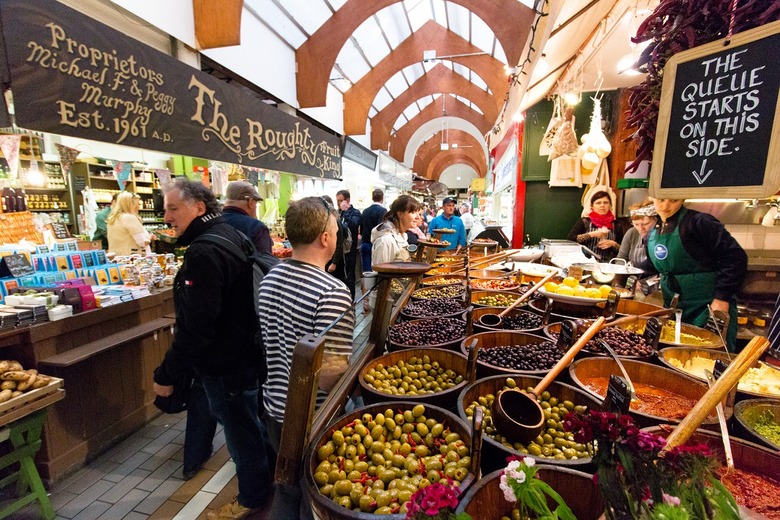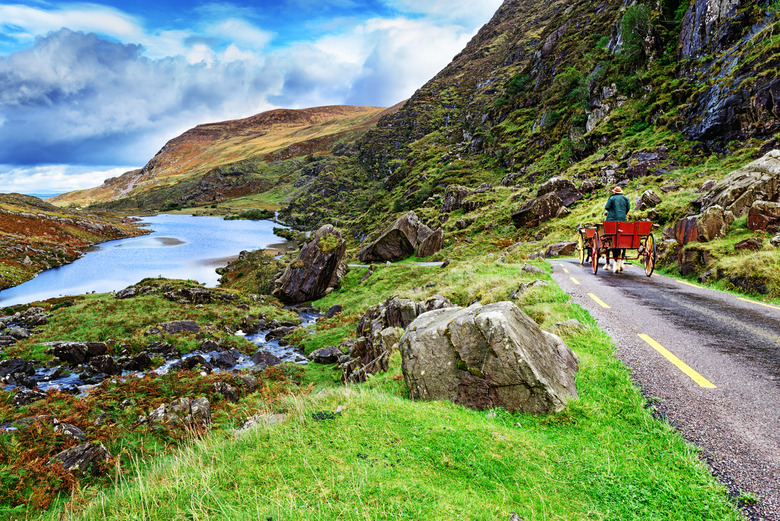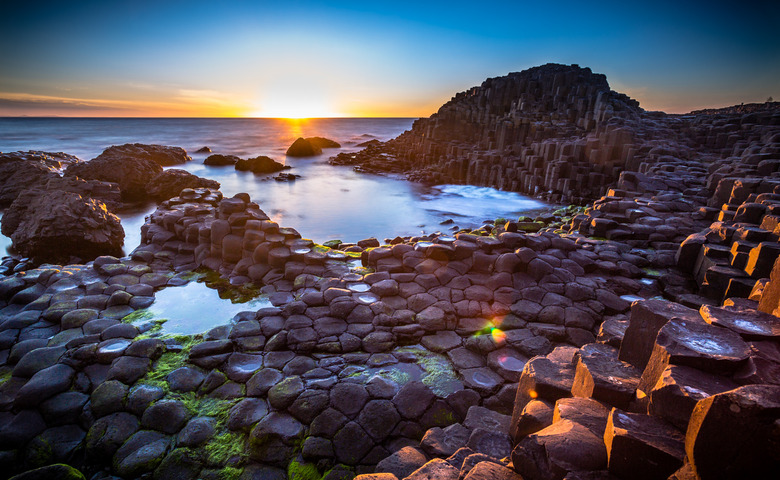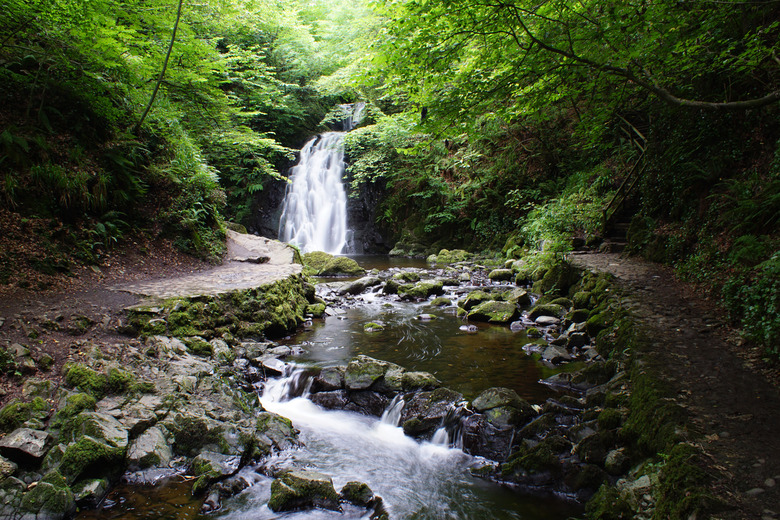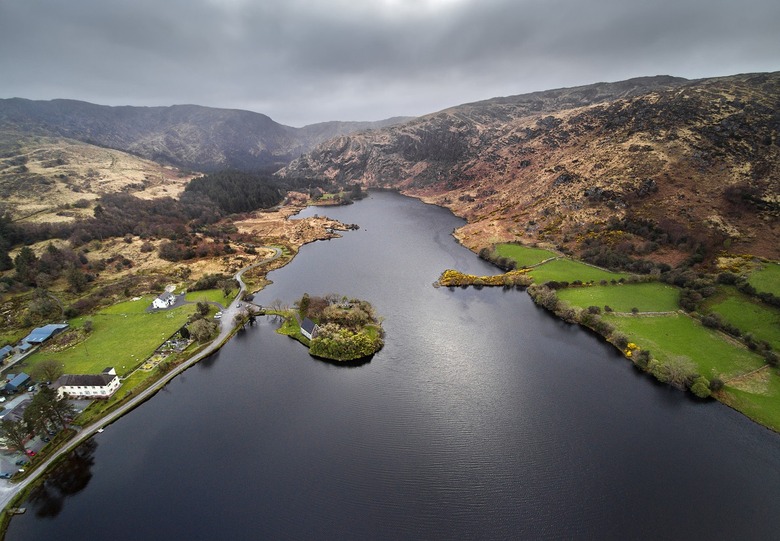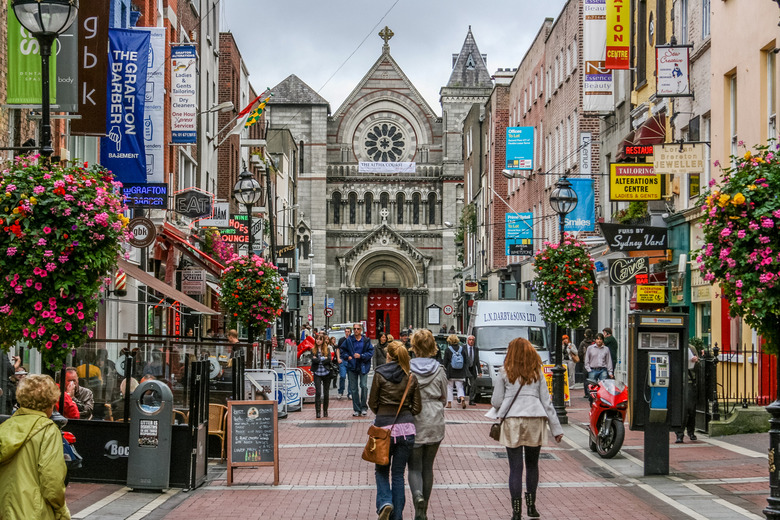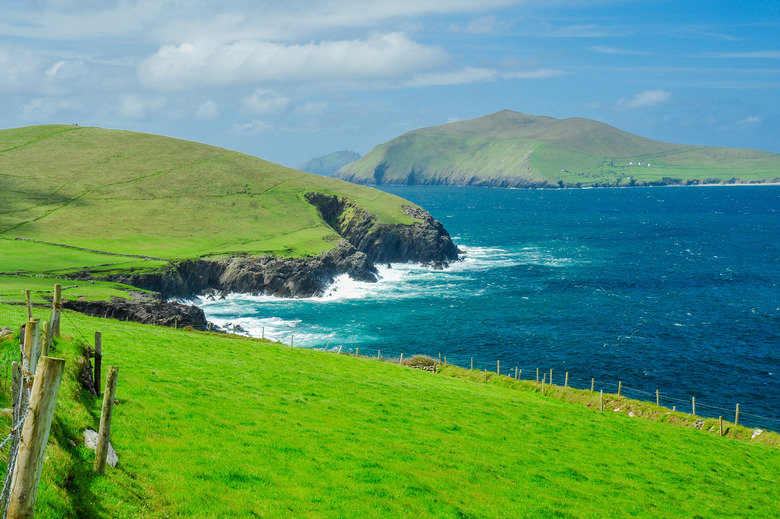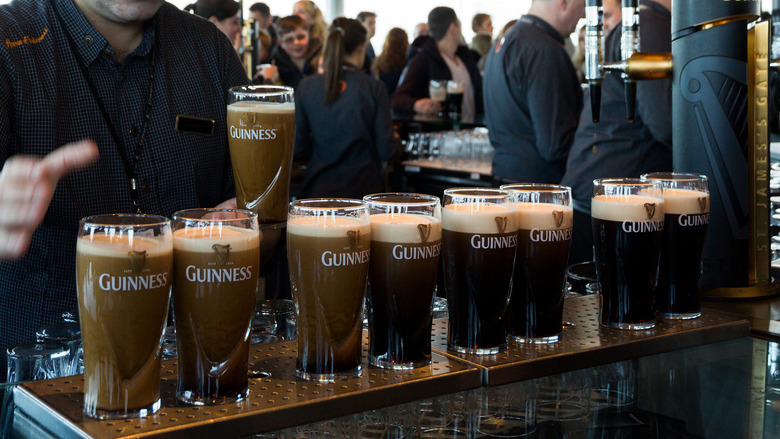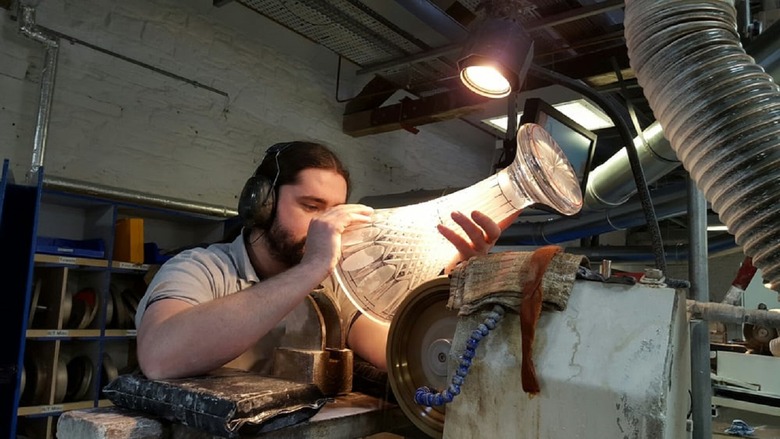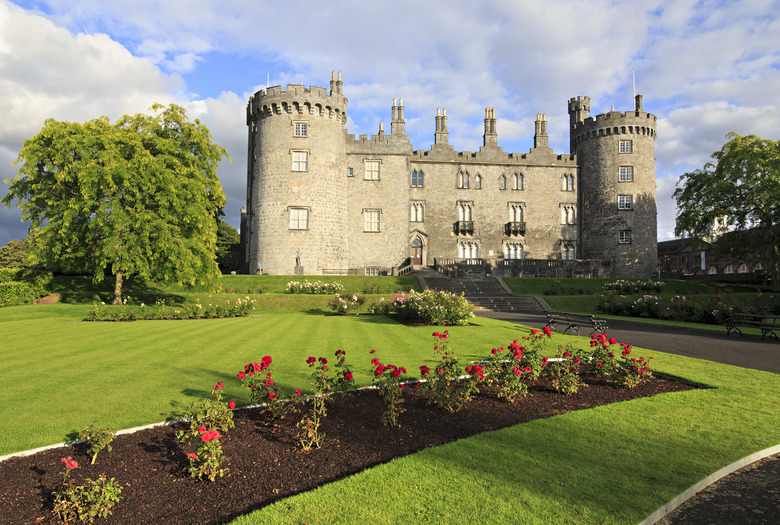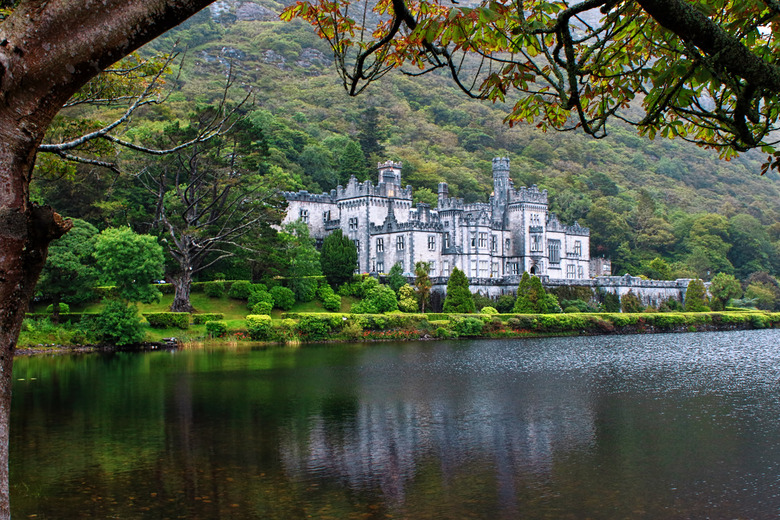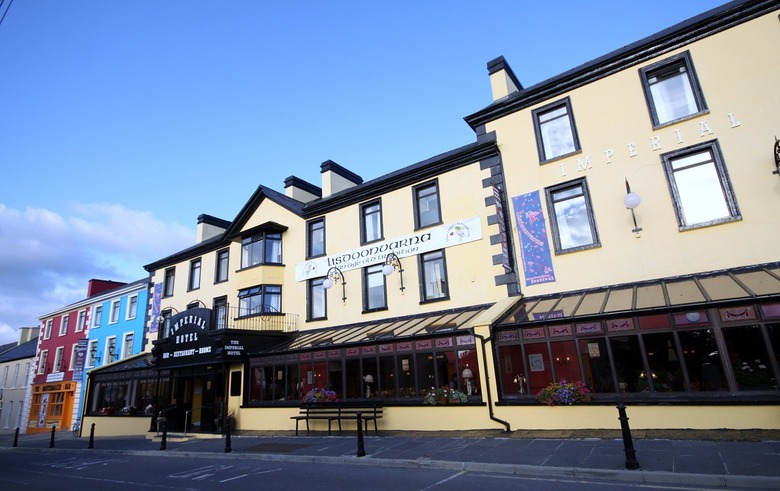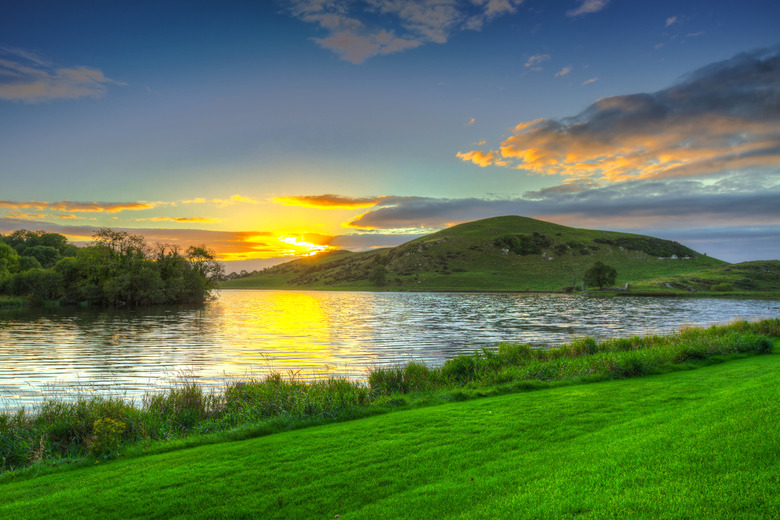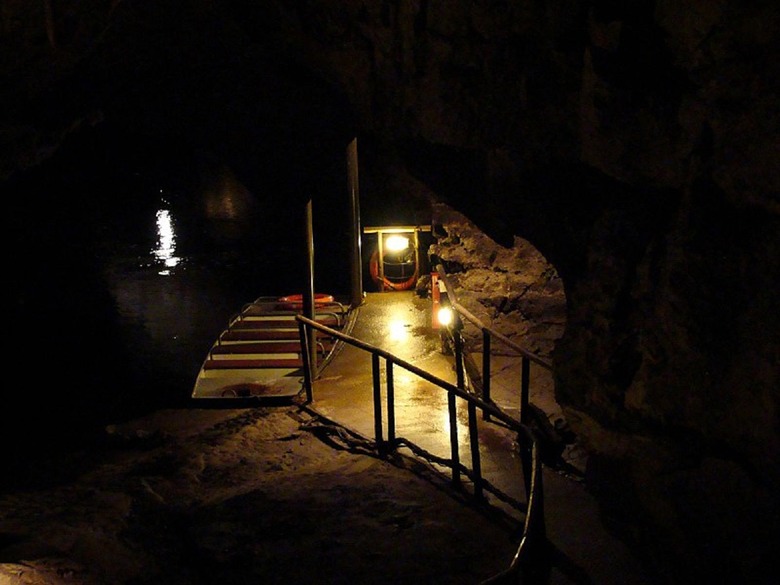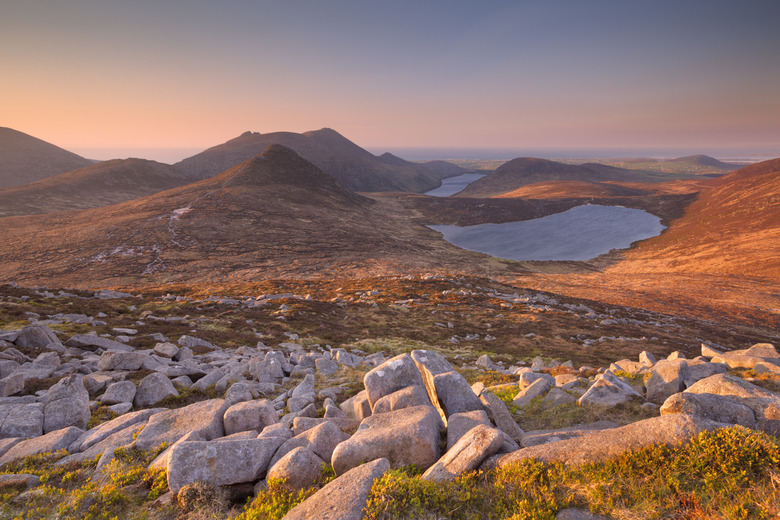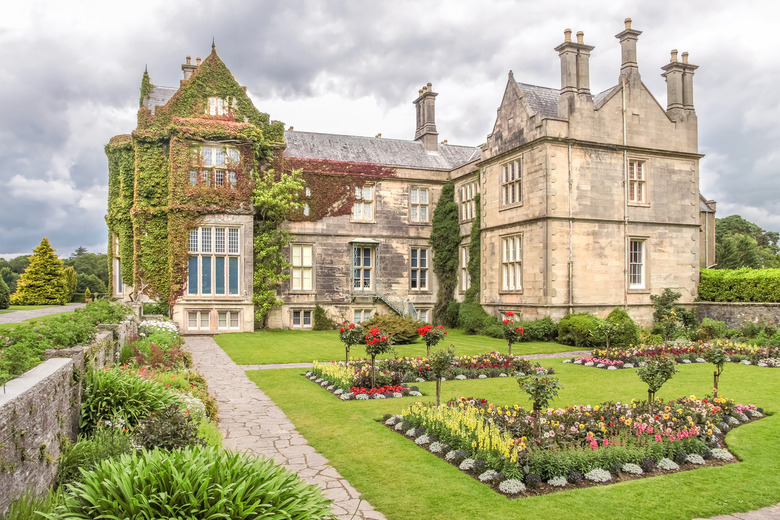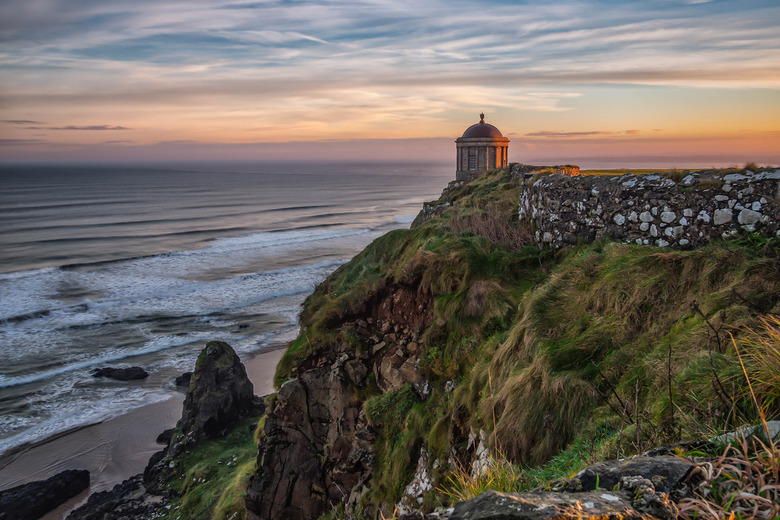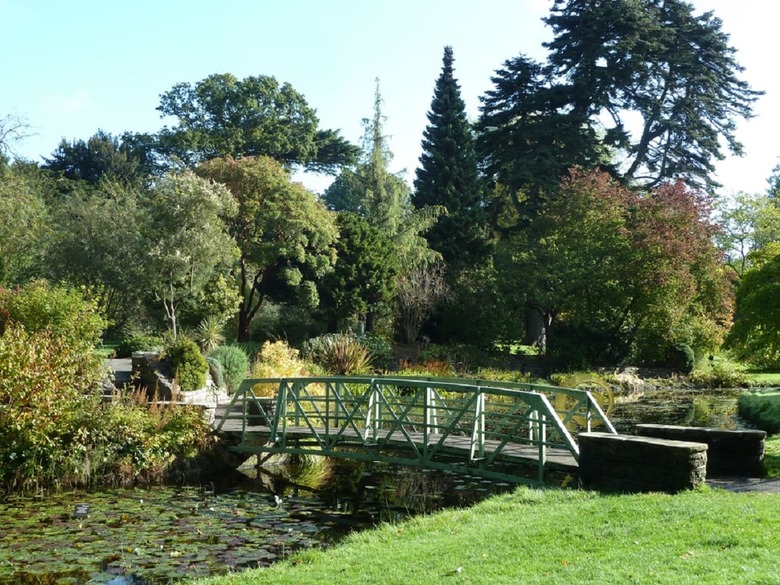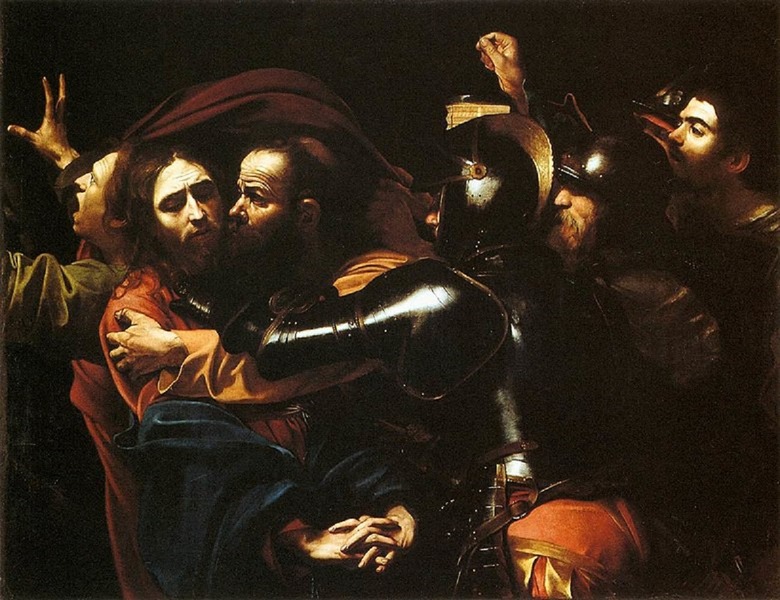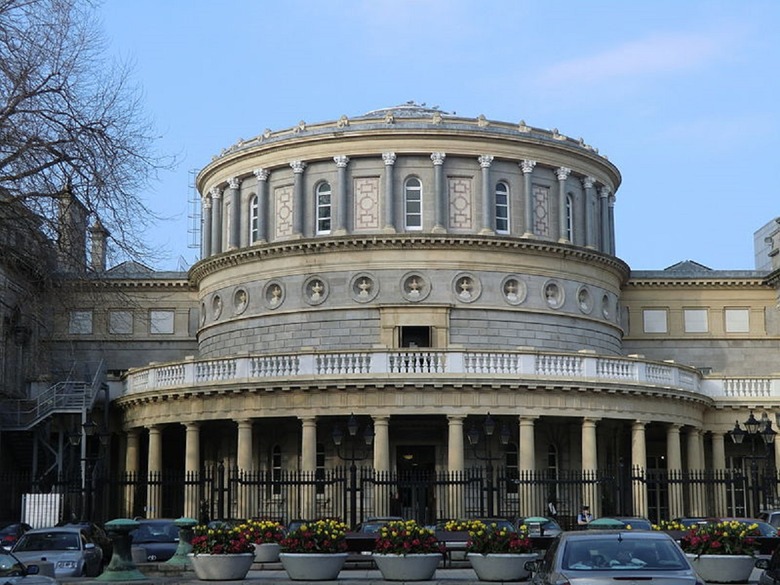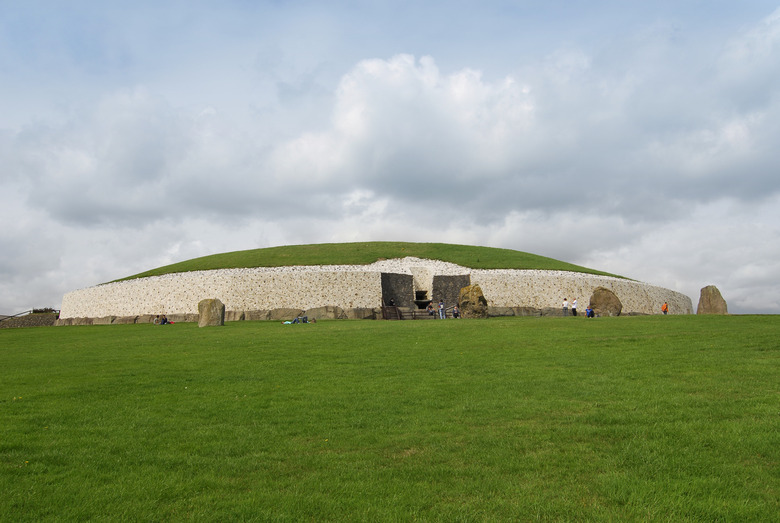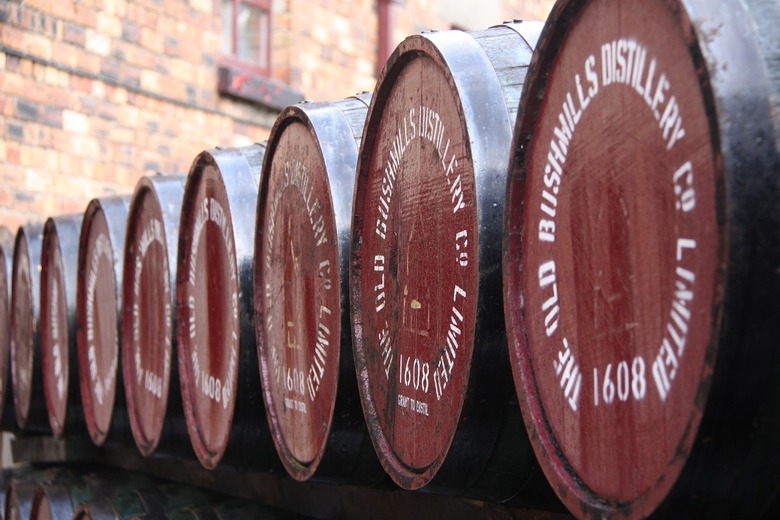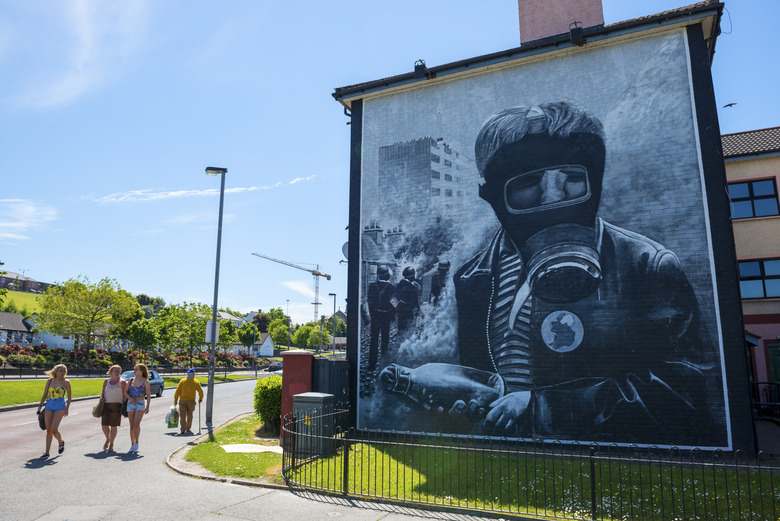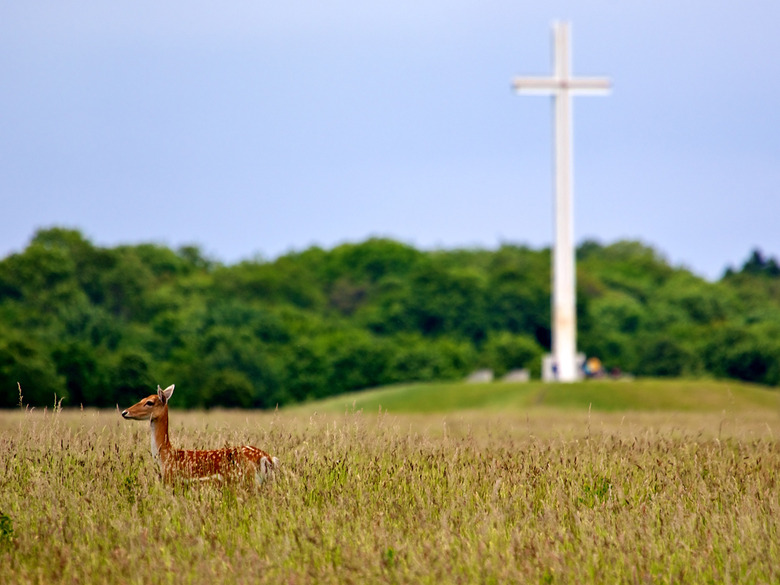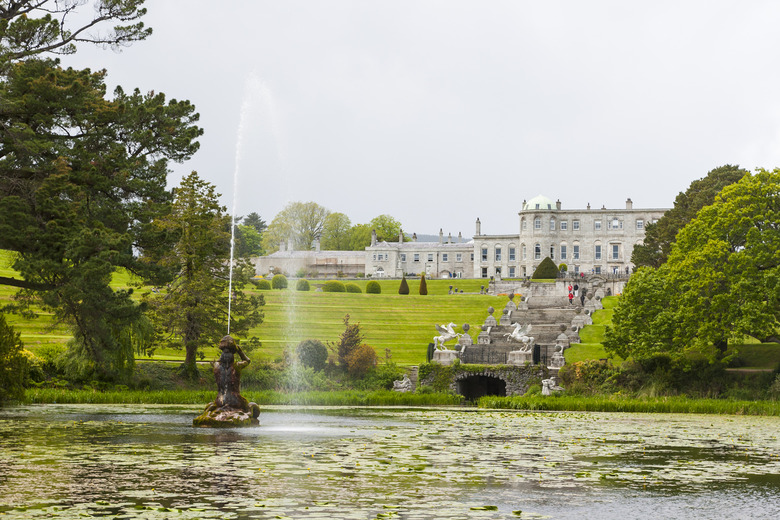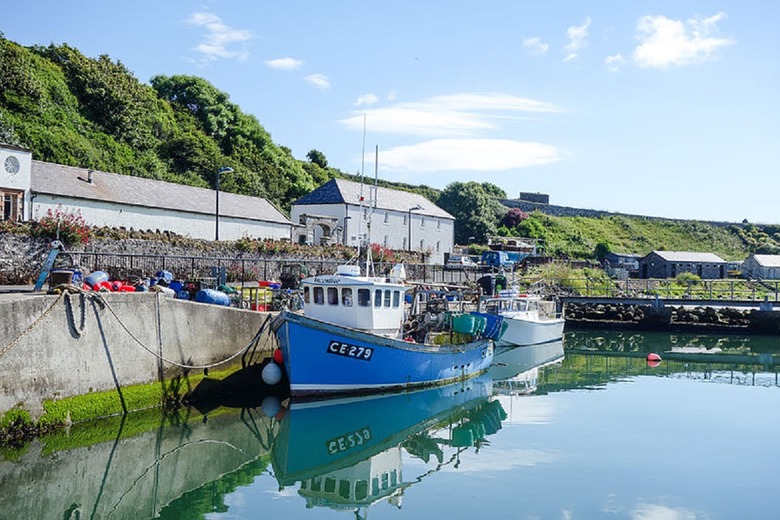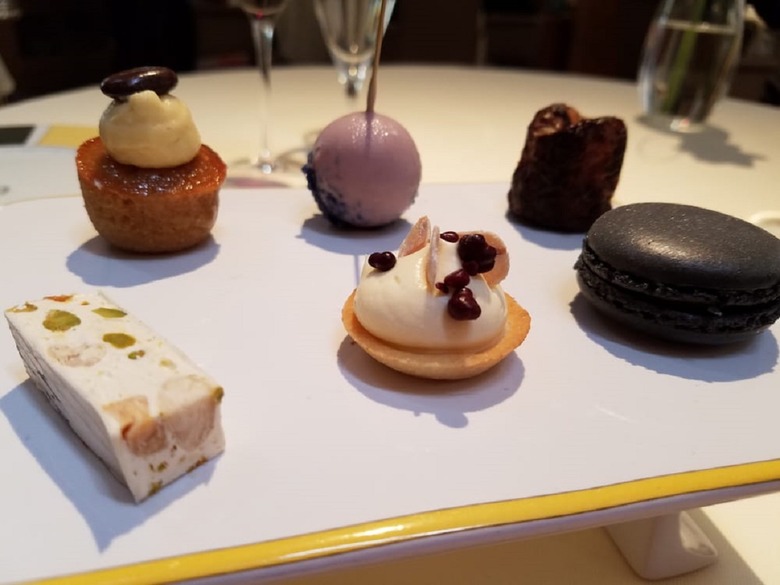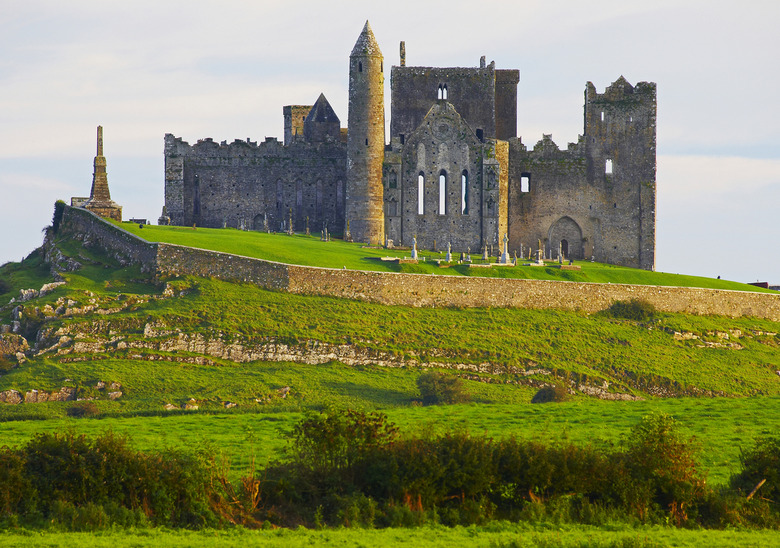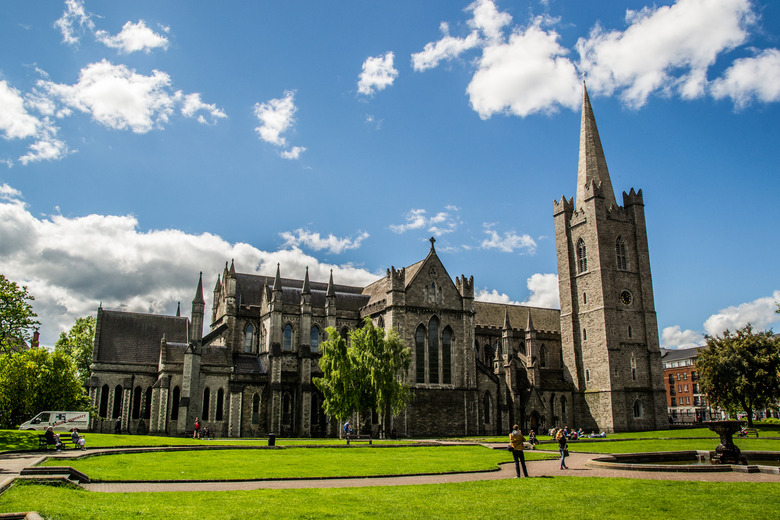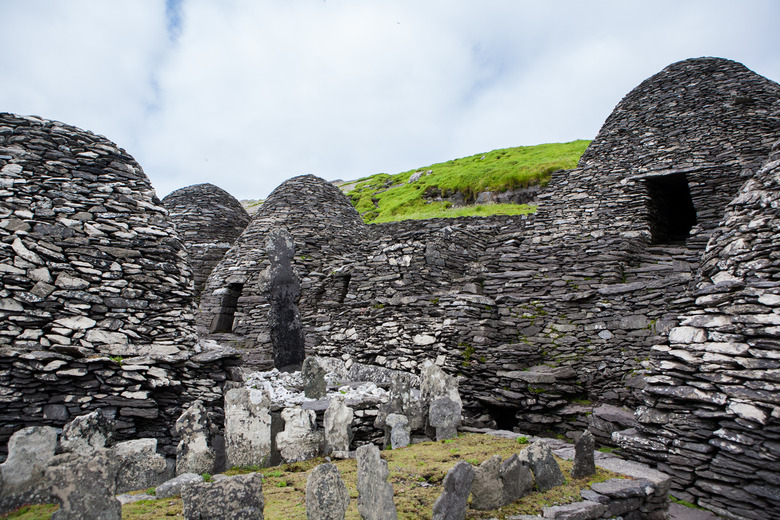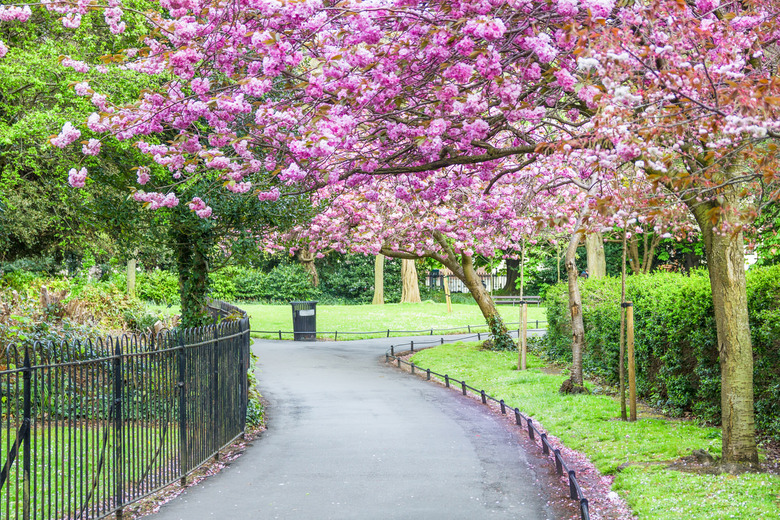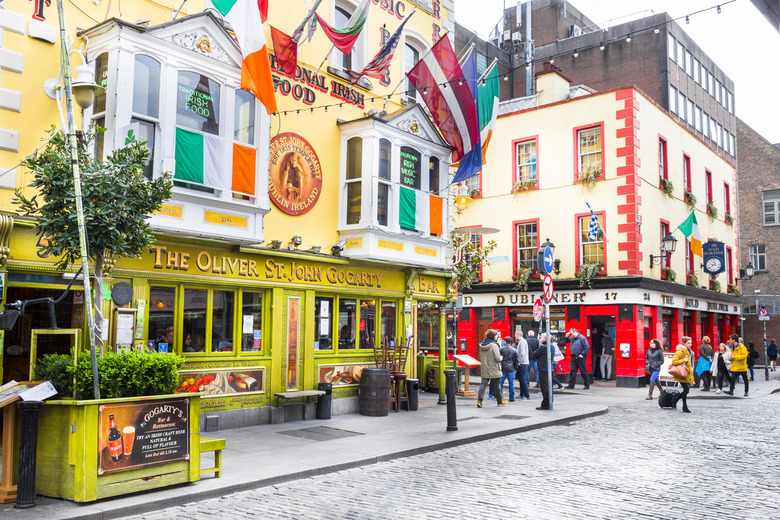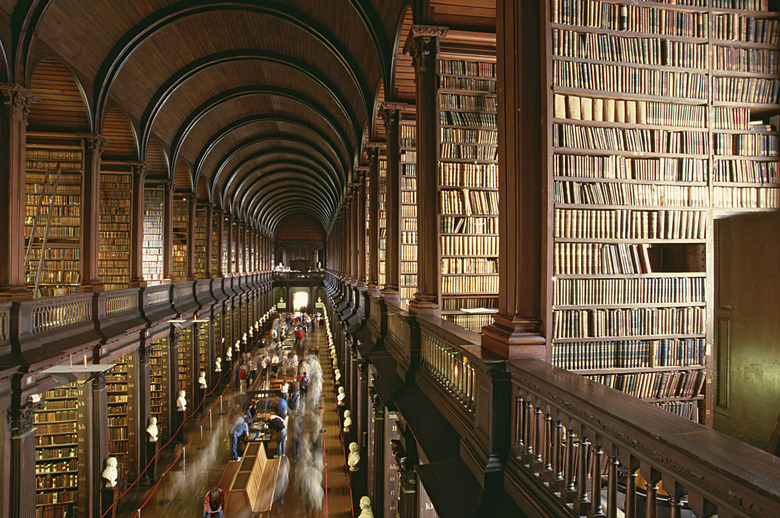50 Magical Spots In Ireland
Located to the west of Great Britain in the North Atlantic, Ireland is an island rich in history, culture and natural beauty. Most of the island is taken up by the Republic of Ireland, which declared independence from the United Kingdom in the early 20th century, while the rest is claimed by Northern Ireland, which remains under the Crown. Despite political division and a tense history, however, both countries demonstrate a beauty in their countryside and culture that is quintessentially Irish, although of course with some regional variations. In Ireland, you'll find a different manner of speaking, eating and even thinking from the rest of the British Isles.
Known for its rolling hills, green landscapes and picturesque waters, Ireland is a great place for a drive, a hike or even a bike ride through the countryside. Its long history of habitation has also resulted in some impressive prehistoric and medieval ruins, as well as churches and cathedrals dating back to the early years of Christianity. Much of the best architecture and tourist attractions will be found in the respective capitals of Ireland and Northern Ireland, Dublin and Belfast, but there's much to see, do, and eat throughout the island. To discover a strong Gaelic culture and some of Europe's most charming historic sites, check out these 50 magical spots in Ireland.
Abbey Theatre
Also known as the National Theatre of Ireland, Abbey Theatre in Dublin has been open since 1904 and was the first state-subsidized theater in the English-speaking world when it began receiving an annual subsidy from the Irish Free State (now the Republic of Ireland) in 1925. You'll find the best of Irish theater here, from the actors to the sets to the costumes and, of course, the writers.
Adare
Located in the Mid-West Region of Ireland, the village of Adare is popularly hailed as one of the prettiest places in the country and has been designated a heritage town by the government. Popular attractions include Desmond Castle, Adare Manor, the Augustinian Priory, the Franciscan Abbey, and the Trinitarian Abbey.
Aran Islands
The Aran Islands are a group of three islands located off the western coast of Ireland in the mouth of the Galway Bay with a total area of approximately 18 square miles. Gaelic is the primary language of the islands' approximately 1,200 residents, and they are home to 38 national monuments as well as many historical attractions from the Bronze Age and Iron Age, making this a great spot to experience traditional Irish culture and history.
Ashford Castle
A spectacular hotel today, Ashford Castle is worth a trip even if you aren't staying in one of its luxurious rooms, as the medieval castle has quite a bit of history in addition to its beauty. The Anglo-Norman House of Burke had it built in 1228, and it subsequently passed through different hands over the centuries, including those of the Guinness family. Royalty have stayed here, such as King George V and his wife Mary of Teck, as well as Prince Rainier III of Monaco and his wife, American actress Grace Kelly, but so have famous non-royals such as President Ronald Reagan, U.S. Senator Ted Kennedy, Oscar Wilde, John Lennon, George Harrison, Robin Williams, Pierce Brosnan and Brad Pitt, among others.
Belfast Castle
Get a stunning view of Northern Ireland's capital from Belfast Castle, an impressive structure dating back to 1870. It's situated on Cave Hill, an excellent place from which to appreciate both the city and the coast, particularly from one of the walking trails going through Cave Hill Country Park.
Benbulbin
Benbulbin is a grassy rock formation, part of the Dartry Mountains in the northwestern part of Ireland. At an elevation of 1,726 feet, it's made up of limestones on top of mudstones and is a popular destination for walking. Going up the north side of Benbulbin is a dangerous endeavor thanks to the high winds coming in from the Atlantic, but the southern side will give you an enjoyable climb with gentle slopes and a gorgeous view of the surrounding plains and the ocean from the top. You'll find interesting flora here, such as arctic-alpine plants, as well as wild hares and foxes. Benbulbin's population of the herb fringed sandwort — the only one of its kind in Ireland — may date back 100,000 years to before the last ice age.
Blarney Castle
Located in the town of Blarney in County Cork, Blarney Castle has been around since 1446, today a partial ruin where you can still tour many rooms and battlements as well as the castle gardens. The reason for its popularity, however, lies at the top, where you'll find the Stone of Eloquence, more commonly known as the Blarney Stone. Over 300,000 people come here every year to be hung upside down over a hole in the parapet to kiss the stone, which legend states will give them the gift of eloquence or flattery.
Bunratty Castle and Folk Park
Visit County Clare in the Mid-West Region of Ireland to see Bunratty Castle, a 15th-century tower house and the best-preserved medieval fortress in the country. Find art, furniture and tapestries dating back to 1600 and attend themed banquets in the evenings. Alongside the castle, you'll find Bunratty Folk Park, a kind of open-air museum featuring over 30 buildings that make up a reconstruction of a medieval village, complete with homes, shops and streets.
Carrick-a-Rede Rope Bridge
Along the northeastern shore of Northern Ireland, many tourists come to County Antrim where a rope bridge goes from the mainland to a small island called Carrick-a-Rede, spanning 66 feet and nearly 100 feet above rocky waters. It's open all year round (outside of extreme weather conditions), and daring visitors can get a great view of the surrounding natural scenery; you can even see the Scottish island of Islay from the bridge.
Chapter One
Located in the capital, Chapter One is one of the best restaurants in Europe, as evidenced by the Michelin star it has consistently earned since 2007. Its name is a reference to the Dublin Writers Museum, as the restaurant is located in the museum's basement, and its menu includes delicious dishes such as fillet of aged Irish beef served with pithivier, smoked bacon and parsnip or rabbit loin with stuffed leek, potato dumpling and black truffle cream.
Christ Church Cathedral
The older of Dublin's two medieval cathedrals, Christ Church Cathedral was founded around the year 1030. It is the official seat of the Church of Ireland and the Archbishop of Dublin, and it is also home to the tomb of Strongbow, a Welsh-Norman lord who was one of the leading figures of the Norman invasion of Ireland in the late 12th century. At over 200 feet long, its cathedral crypt is the largest in both Ireland and Britain, having been constructed in 1173 and containing artifacts such as the tabernacle and candlesticks used when King James II attended high mass after having fled England during the Williamite War, Ireland's oldest known secular carvings, historic books and altar goods, and a mummified cat and rat. It's also served as a film set for television shows set during the medieval era, such as "Reign" and "The Tudors," and costumes from the latter are also on display in the crypt. The cathedral's Christmas market is also responsible for making Dublin one of the best places in the world to celebrate Christmas.
Cliffs of Moher
With a million visitors a year, the Cliffs of Moher are Ireland's most popular natural tourist attraction and make up one of the most stunning coasts in the world. Nearly 400 feet tall at their southern end and reaching a maximum height of over 700 feet in the north, the shale and sandstone cliffs have rocks older than 300 million years, as well as approximately 30,000 birds from over 20 species who reside there.
Dark Hedges
Featured in the hit HBO show "Game of Thrones," the Dark Hedges is an avenue of beech trees planted in the 18th century between the villages of Armoy and Stranocum in Northern Ireland. More than 150 beech trees were planted by the Stuart family along the road leading up to their estate in order to impress their visitors, and they definitely succeeded, as the road now looks like something out of a fairy tale.
Dingle Peninsula
A drive through the Dingle Peninsula will give you a new appreciation for the Irish countryside, with rolling hills, scenic mountains and beautiful beaches lined by impressive cliffs. Ireland comes to life here not only through the land, but through the traditional Irish language and culture that thrives here as well. History also has an important place on the peninsula, which is home to multiple remains from prehistoric and early medieval times.
Dublin Castle
The inauguration site of Ireland's presidents today, Dublin Castle was the seat of administration for the U.K. government until 1922 when Ireland became independent. The castle and its complex are open to the public, outside of state functions, visitors can see its grand halls, throne room and state drawing room, dining room and bedrooms.
Duckett’s Grove
Now in ruins yet still beautiful, Duckett's Grove in Ireland's County Carlow is a former estate from the 19th century that was built by the Duckett family in the Gothic revival style. Today, it is open as a free public park with beautiful walled gardens full of roses, Chinese and Japanese peonies, figs and historical varities of Irish apple. On the weekends and for special events, tea rooms in the courtyard are also open to the public.
Dunluce Castle
Yet another castle, but this time in Northern Ireland, Dunluce is now more ruin than castle, dating from the 13th century and situated on the edge of a basalt bedrock. A bridge connects it to the mainland, and you'll have to use the bridge to get there if you're daring enough; steep drops make the hike here a bit nerve-racking, but the view once you're up there is more than worth it.
English Market
Right in the center of Cork lies English Market, a fantastic food market known for its local artisan food products and the beautiful mid-19th-century architecture of the building that houses it. Many of Cork's top restaurants source their ingredients from English Market, which is known for its fresh fish and butchers in particular, as well as supplying fresh produce from all over the world. It's a great spot to try out local specialties such as spiced beef and drisheen (a type of Irish black pudding).
Gap of Dunloe
Between the MacGillycuddy's Reeks mountain range and Purple Mountain in the South-West Region of Ireland lies the Gap of Dunloe, a narrow mountain pass that provides breathtaking scenery. Either ride a pony down the narrow winding road here or take a jaunting car, a sort of horse-drawn carriage in which four passengers sit facing each other.
Giant’s Causeway
Head to the northern coast of Northern Ireland where you'll find Giant's Causeway, an unusual yet popular spot where 40,000 basalt columns interlock to make up a scenic natural wonder that was declared a UNESCO World Heritage Site in 1986 and a national nature reserve in 1987. An ancient volcanic eruption was responsible for its formation, creating columns that are largely hexagonal, with some having four, five, seven, or eight sides and the tallest reaching nearly 40 feet. The name, however, comes from local legend which tells a tale in which the causeway was built by a giant.
Glenoe Waterfall
One of the most beautiful waterfalls on the entire island, Glenoe Waterfall is just a short walk from the northeastern hamlet of Glenoe in Northern Ireland. Located in a deep gorge, there are steps on either side of the valley that you can carefully navigate to get a better view of this picturesque sight.
Gougane Barra National Forest Park
The settlement of Gougane Barra is located in County Cork in southern Ireland at the foot of the Sheehy Mountains, and here you'll find a national park that makes up about 339 acres of gorgeous natural Irish beauty. It's a fantastic place to hike or take a walk, with six trails to suit every level of expertise, and for cyclists, the nearly 200-mile-long Cork City-Beara-Gougane Barra cycle route ends here. You'll find a gorgeous lake surrounded by forests of pine trees, as well as a small island on the edge of the lake where you'll find St. Finbarr's Oratory, a small sixth-century church where the patron saint of Cork founded his monastery. There's also a trail nearly 2 miles long that's meant for a scenic drive where you can enjoy the beautiful wildlife and plants of the area from the comfort of your car.
Grafton Street
Running between St. Stephen's Green and Trinity College, Dublin's Grafton Street is a shopping street with more than just the usual stores and restaurants — it's also filled with buskers (street performers) and street vendors selling colorful flowers. The street is quite friendly for pedestrians, and the people are friendly for a conversation or quick advice as to where to go next. The charm of this place is such that it's been declared an Architectural Conservation Zone so that generations can continue to appreciate this historic spot.
Great Blasket Island
Before taking a ferry to Great Blasket, the principal island of the uninhabited Blasket Islands off the southwestern coast of Ireland, visit the Great Blasket Centre in Dunquin, where you can learn about the people who once lived there and their strong Gaelic traditions and literary legacy that produced many Irish classics. Until 1953, the Blasket Islands were populated by a community that spoke primarily Gaelic, but residents had to be evacuated after a resident passed away with no access to a doctor or priest. Anthropologists and linguists have found a lot of interest in this community's history and the legacy they left behind, and tourists continue to as well.
Guinness Storehouse
Attached to the St. James's Gate Brewery where Guinness Draught is mainly brewed, the Guinness Storehouse is a popular Dublin attraction that chronicles the nearly 260-year history of the company and teaches visitors about how their brew is made. In addition to a self-guided interactive tour, visitors can pour themselves a pint at the Perfect Pint Bar, try some Guinness-inspired Irish dishes at the Brewery Bar, and take in a beautiful view of the city from the Gravity Bar.
House of Waterford Crystal
Waterford, Ireland's oldest city, is the home of Waterford Crystal, a high-end crystal production company which has a factory in its hometown where visitors can get a behind-the-scenes look at the magic that creates this valuable export. Witness some of the finest glass being blown and cut by hand at the House of Waterford Crystal, which has produced everything from chandeliers to dinnerware to international sporting trophies.
Kilkenny Castle
Strongbow, also known as the 2nd Earl of Pembroke, built Kilkenny Castle, completing it in 1213, and it was subsequently owned by various earls of Pembroke and then the Butler dynasty before being sold to the people of Kilkenny for £50 in 1967. The stunning three-sided castle has a grand great hall and plenty of rooms for you to explore for a fee, but access to its beautiful gardens is free of charge, and it's a great excuse to see this adorable small European town.
Kylemore Abbey
A 19th-century castle that became a Benedictine monastery in 1920 to host a convent forced to flee Belgium during World War I, Kylemore Abbey is a gorgeous spot in western Ireland both because of its natural scenery and the impressive architecture. While a section is closed off for the use of its nuns, visitors can visit the ground floor of the castle, as well as the abbey's neo-Gothic church, mausoleum, and beautiful walled Victorian gardens with optional guided tours and history talks. The abbey also has a café and a tea shop, and guided hikes will help you discover more of the natural beauty surrounding the estate.
Lisdoonvarna
With a population of just 829 as of 2017, Lisdoonvarna is a town with a reputation far bigger than itself. The Aille river flows through here, meeting up with the Kilmoon and Gowlaun streams, and turning Lisdoonvarna into a spa town, complete with a spa park where the Aille meets Gowlaun. Lisdoonvarna's fame, however, has largely come from its annual matchmaking festival, one of the largest in Europe. The event draws over 40,000 people each September in hopes of finding love.
Lough Gur
Lough Gur, located in the Mid-West Region of Ireland, isn't just a lake; it's considered one of Ireland's most important archaeological sites. Archaeologists have found evidence of people living near here since approximately 3000 B.C., as there are many megalithic remains present here, some of which have been declared national monuments. A car park, picnic area and visitors center are located right next to the lake to help you fully enjoy your stay, and while motorized watercraft are banned, the lake is still popular for other watersports.
Marble Arch Caves
Located in southwestern Northern Ireland, the Marble Arch Caves are natural limestone caves formed as a result of three rivers draining off of Cuilcagh Mountain and combining underground to become the subterranean Cladagh River. It's the longest known cave system in Northern Ireland, and visitors can explore the caves from March through September by traveling through the first part on a boat before getting off and seeing the rest on foot.
Mourne Mountains
Take a trek to the top of the world for a truly enchanting view. Officially designated an Area of Outstanding Natural Beauty by the government of Northern Ireland, the Mourne Mountains are a granite mountain range located in the southeastern part of the country. Predictably, it's a favorite of tourists, hikers, hillwalkers, rock climbers, and cyclists who come here to enjoy the rivers, woodlands and lakes of the mountains, which offer fantastic views. The highest mountain, Slieve Donnard, stands nearly 3,000 feet tall and gives a great view of England and Scotland from afar.
Muckross House
Built in 1843 in County Kerry and located within the Ring of Kerry, Muckross House is a Tudor-style mansion which, along with the 11,000-acre estate it sits on, was donated to the Irish Free State in 1932, becoming its first national park. Since then, that national park has expanded to become Killarney National Park, but Muckross House remains its heart. The mansion, with its 65 rooms, beautiful gardens and an accompanying restaurant, is a picturesque spot to appreciate both architecture and countryside.
Mussenden Temple
Built in 1785 as a library that was part of the estate of the 4th Earl of Bristol, who was also the Lord Bishop of Derry for the Church of Ireland, Mussenden Temple was modeled after the Temple of Vesta in Rome. The small yet gorgeous temple sits 120 feet up on top of the cliffs overlooking the Atlantic Ocean in County Derry on the northwestern coast of Northern Ireland, giving a stunning view.
National Botanic Gardens
Open year-round and located in the Dublin neighborhood of Glasnevin, the National Botanic Gardens of Ireland contain 48 acres of beautiful plant life, including 20,000 living plants and millions of dried plant specimens, as well as beautifully built greenhouses. Established in 1795, the gardens have been an important part of national and global initiatives for sustainable development and biodiversity conservation, as well as horticultural research and training. Best of all, admission for tourists is free.
National Gallery of Ireland
Founded in 1854 and open to the public since 1864, the National Gallery of Ireland is home to Ireland's national collection of Irish and European art, located in the Republic of Ireland capital of Dublin. The gallery currently houses about 14,000 artworks, which include approximately 5,000 drawings, 5,000 prints, 2,500 oil paintings, and multiple sculptures, pieces of furniture, and other works of art. It has an impressive collection of Irish art and paintings, as well as works by Italian Baroque artists such as Caravaggio and Dutch masters such as Rembrandt and Vermeer.
National Library of Ireland
You won't be able to borrow any books from the National Library of Ireland, as it's a reference library and doesn't lend anything out, but you'll be able to see plenty while you're there. Located in Dublin and established in 1877, the library's self-declared mission is "to collect, preserve, promote, and make accessible the documentary and intellectual record of the life of Ireland and to contribute to the provision of access to the larger universe of recorded knowledge." As such, it has an impressive archive of books, newspapers, photographs, maps, and manuscripts relevant to Irish culture and history, often hosting interesting exhibitions. It also houses many personal notes and work books that belonged to famed Irish literary figures such as James Joyce and William Butler Yeats. Those with roots in Ireland would benefit from a trip here not only because of the cultural value, but also because the library offers genealogy services among its many resources.
Newgrange
Travel to County Meath in the Mid-East Region of Ireland to visit Newgrange, a prehistoric monument older than even Stonehenge or the Pyramids of Giza. Built around 3200 B.C. during the Neolithic period, the circular monument is nearly 280 feet wide at its widest point and contains an inner stone passageway and chambers where human bones were found, as well as what may have been grave goods and votive offerings. Mystery surrounds this site, and no one is sure what its purpose was, although many historians believe it may have had a religious significance, as its entrance lines up with the sunrise on the winter solstice and Irish folklore depicts it as a dwelling of the Gaelic gods.
Old Bushmills Distillery
Visit Old Bushmills Distillery, Ireland's oldest working distillery, located on the northern coast of Northern Ireland. For over 400 years now, Bushmills has been making top-quality Irish whiskey, and visitors can come here to see how they do it through a guided tour and a complimentary glass of the end product.
The People’s Gallery
The People's Gallery is a series of murals spanning the length of Rossville Street in the city of Derry, Northern Ireland. In 1993, three muralists known as the Bogside Artists began painting murals chronicling the events of the Troubles, a period of political unrest and violence in the country.
Phoenix Park
One of the largest parks in the world and open to visitors year-round, Dublin's Phoenix Park encompasses about 1,750 acres of land and was established in 1662. Within the park you'll find Áras an Uachtaráin, the residence of the President of Ireland; the Dublin Zoo, which is home to over 700 animals from around the world; gardens; monuments; and even a fort, among many other attractions. Of its 351 identified plant species, three are rare and protected, and the park is also home to at least 72 species of birds as well as a herd of wild deer. The park is also a popular spot for food lovers, with a café and tea rooms as well as plenty of restaurants nearby.
Powerscourt Estate
Taking up 47 acres of land in the County Wicklow town of Enniskerry, Powerscourt House and its surrounding estate and gardens constitute a popular tourist attraction with quite a bit to see. The house, which took 10 years to build and was finished in 1741, holds a lot of history, and King George IV was once a guest here. The grounds include winged horse statues, walled and Japanese gardens, a pet cemetery, a golf club, a waterfall and Tara's Palace Museum of Childhood, which features dolls, dollhouses, and historic toys. As a result of the beautiful scenery here, Powerscourt Estate has also been quite popular as a filming location, being featured in films such as "Barry Lyndon," "Excalibur," and the 2002 adaptation of "The Count of Monte Cristo."
Rathlin Island
Rathlin Island has a miniscule population of just about 150 people, and it's the northernmost point of Northern Ireland, located off its northern coast. Created by a prehistoric volcano, it's been designated a Special Area of Conservation and is home to tens of thousands of seabirds, such as puffins, razorbill, kittiwakes and common guillemots. It's a truly beautiful spot with its natural beauty quite apparent in its cliffs over 200 feet tall and caves ready for tourists to explore.
Restaurant Patrick Guilbaud
The highest-rated dining experience on the entire island per the Michelin Guide (and one of the best in all of Europe), Restaurant Patrick Guilbaud is the only one to have received two stars from the company. Located in Dublin, the restaurant has led the city's fine dining scene for over three decades now with contemporary Irish fare that manages to stick to its roots, with dishes like Celtic Sea black sole, caramelized veal sweetbread and croquettes of suckling pig served with fried quail egg and foie gras.
Rock of Cashel
Located in southern Ireland, the Rock of Cashel is a historic site also known as Cashel of the Kings or St. Patrick's Rock. For hundreds of years before the Norman invasion of Ireland, the Rock of Cashel was the traditional seat for the kings of Munster (the historical southwestern province of Ireland), and it is said that the King of Munster was converted by St. Patrick in Cashel in the fifth century. It's a grand show of medieval architecture and Celtic art, and visitors can witness the chapel of King Cormac Mac Carthaigh (built between 1127 and 1134) and a medieval cathedral (built between 1235 and 1270).
Saint Patrick’s Cathedral
The National Cathedral of the Church of Ireland, Saint Patrick's Cathedral is the tallest and largest church in Ireland and was founded in 1191. The location of many public ceremonies, most notably Christmas, its interior is as impressive and breathtaking as its exterior. There are over 500 people buried either under the cathedral floor or in the church's cemetery, including famed Anglo-Irish satirist Jonathan Swift, who served as Dean of Saint Patrick's Cathedral from 1713 to 1745.
Skellig Michael
Having already made a noteworthy appearance in the Star Wars films "The Force Awakens" and "The Last Jedi," Skellig Michael is a mysterious spot that has recently achieved a degree of celebrity it already should have had worldwide. A UNESCO World Heritage Site since 1996, the top of the island hosts an ancient Christian monastery which has been there since sometime between the sixth and eighth centuries. Six hundred stairs over 1,000 years old lead to the top of the island in a steep and very slippery climb without hand or side rails of any kind.
St. Stephen’s Green
Situated in the city center of Dublin, St. Stephen's Green is a public park that was established in 1664 and is open year round to visitors. The park contains multiple memorials and statues, as well as a fountain, a lake where you can feed ducks and a formal garden located right in the middle of it all. It's a beautiful place to take an urban hike or jog, have a picnic or even just sit and relax, and it's right next to Grafton Street where you'll find a shopping center named after it.
Temple Bar
Central Dublin's Temple Bar is its cultural quarter, with tons to do no matter what time of day it is. Art galleries and theaters populate the area, but at night it's the nightclubs, bars, and restaurants that draw tourists in droves. On Saturdays, Cow's Lane hosts the Cow's Lane Market, a fashion and design market outdoors featuring Irish and Ireland-based designers.
Trinity College Library
The Library of Trinity College, the sole constituent college of the University of Dublin, is the country's largest library as well as one of the most romantic spots in Dublin. Around since 1592, the library houses approximately 6 million volumes. You can find around 200,000 of the oldest in the Long Room, the main chamber of the Old Library, which stretches over 200 feet. The Long Room is also home to the Trinity College harp, which may be the oldest existing harp in the world and is known for inspiring the logo of Guinness. The library is also the permanent home of the Book of Kells, an illuminated Latin Gospel manuscript believed to have been created around A.D. 800; two of its four volumes are on display at all times, with the specific volumes and pages shown changing regularly. For more magical travel ideas, check out these travel experiences that will transform your life.
More From The Daily Meal:
These American Small Towns Feel Just Like Europe
